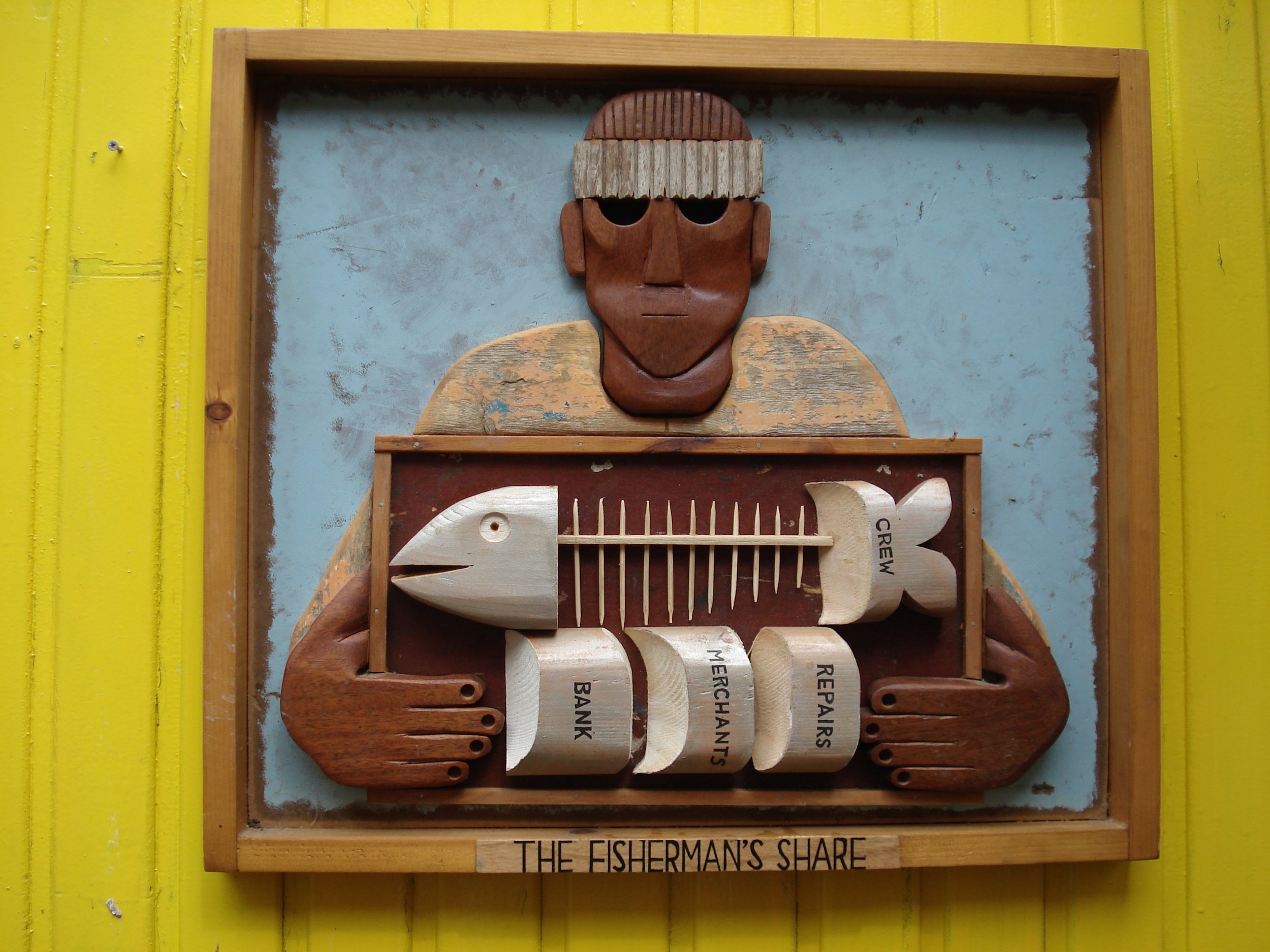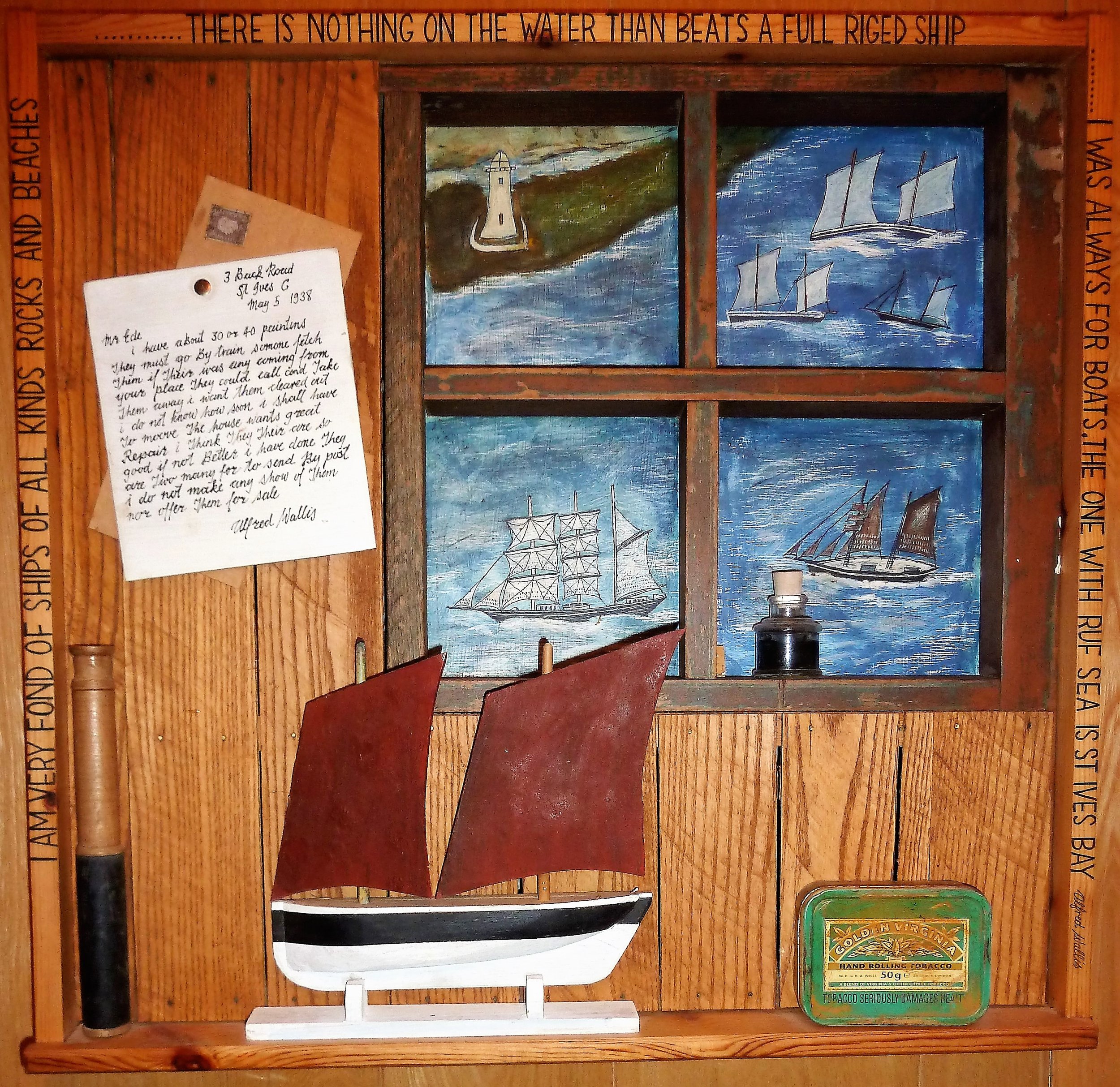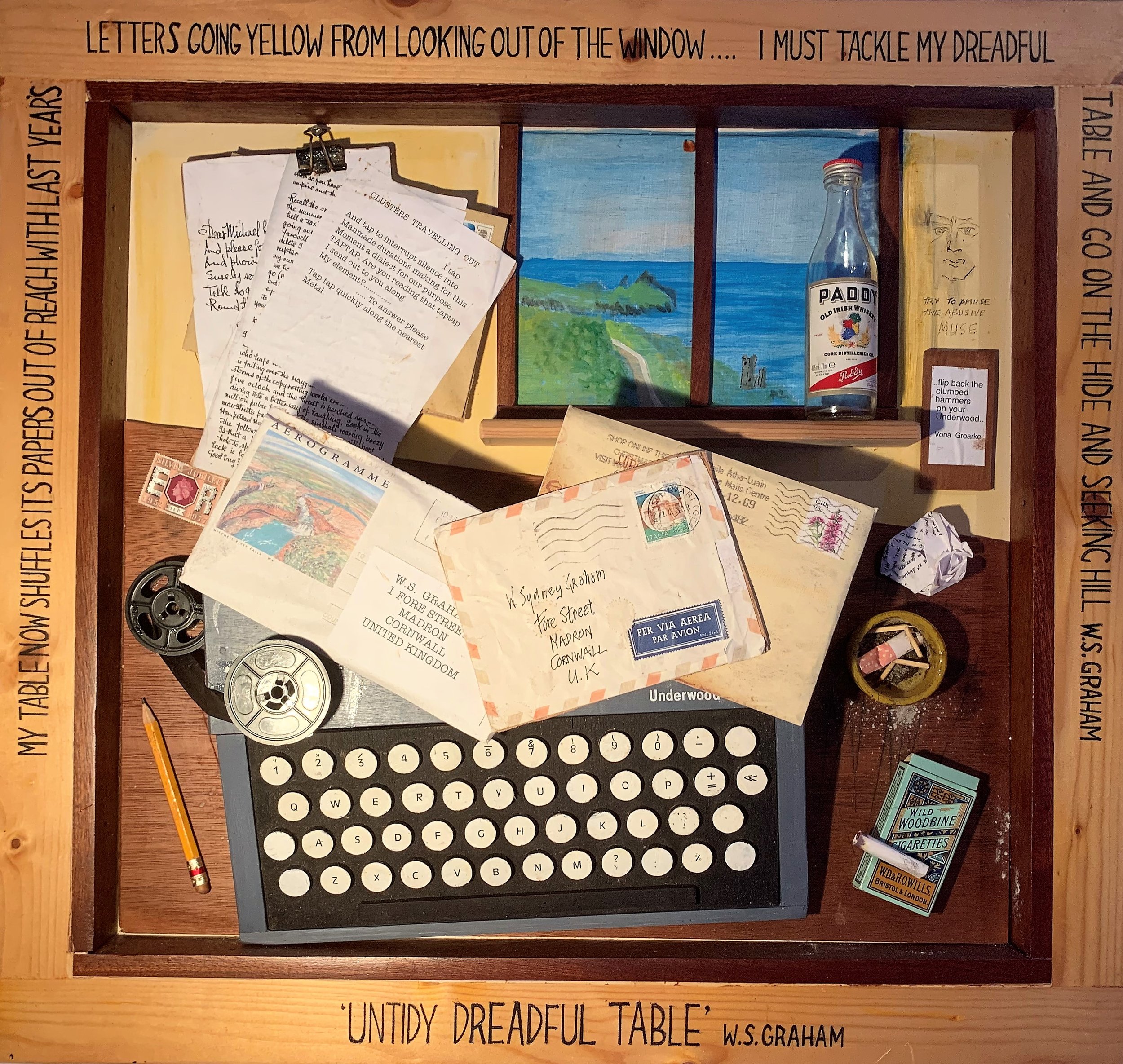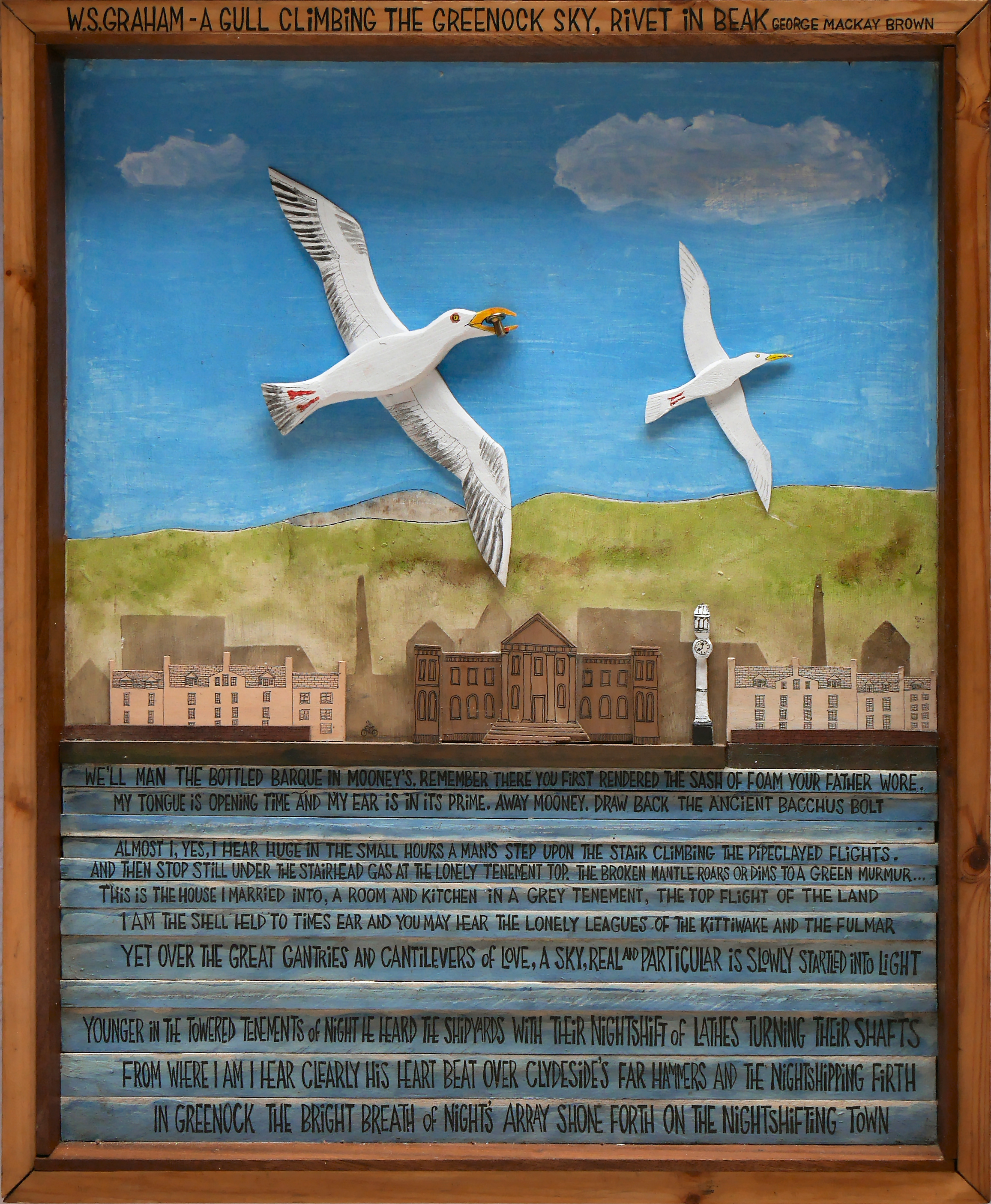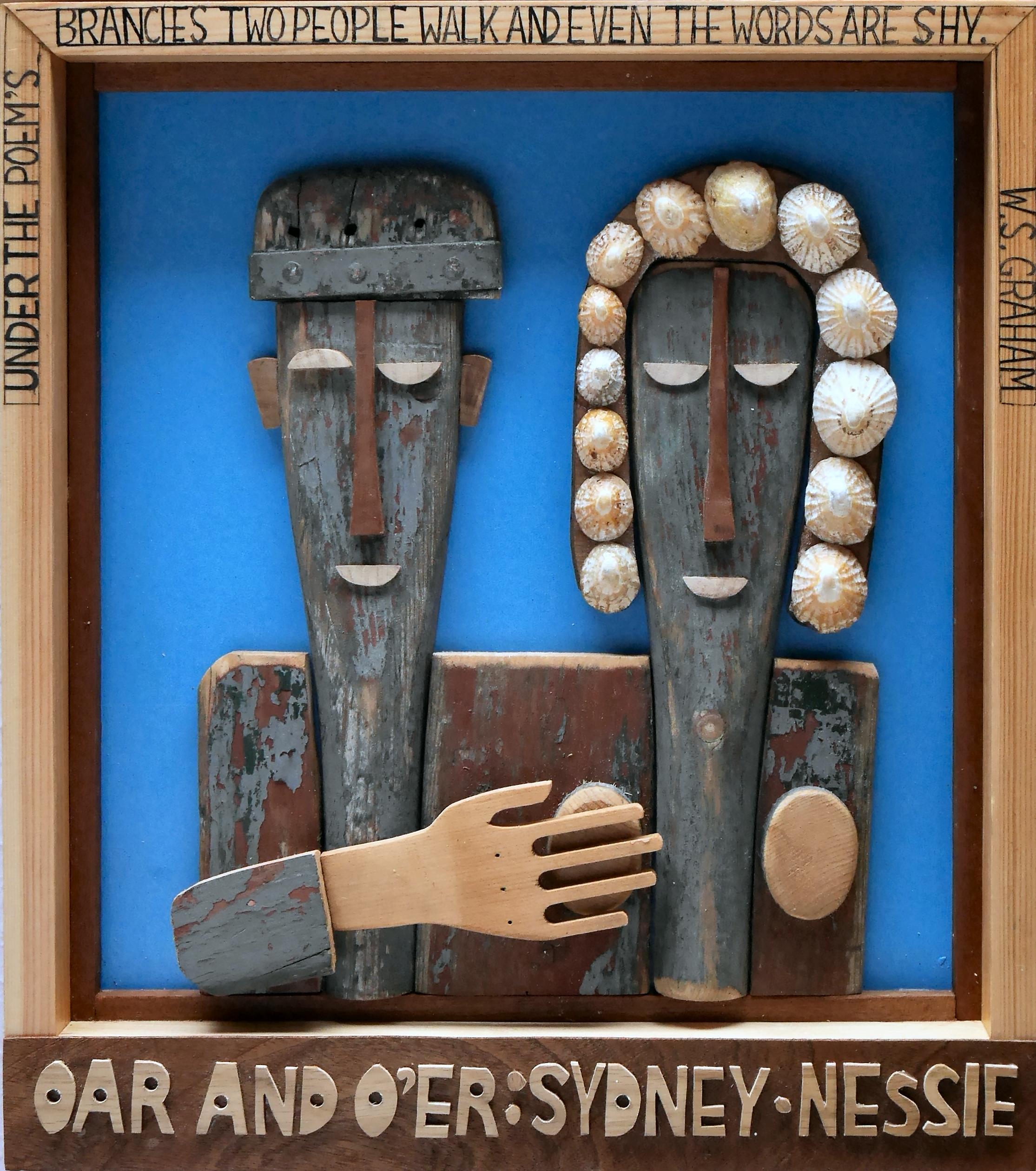
Mike McDonnell: The Art of Doctor Mike
The Shetland artist, Mike McDonnell, had a creative career that only really took off when he retired from working as a doctor in 2000, yet in twenty years he produced a body of work of extraordinary depth, range and impact. So much so that a year and a half after his death, Da Gadderie in Lerwick has mounted a substantial retrospective exhibition and one of Shetland’s most celebrated writers, Jonathan Wills, has written a book that introduces the artist and his work.
Mike’s work is not well known outside the Northern Islands and the orbits of Greenock and Ullapool’s Ceilidh Place so it is with great pleasure that Jonathan Wills responded so positively to our request to introduce Dr Mike to the wider Scottish art audience and allow art-scot to reproduce a chapter from the book, From Greenock to St Ives.
Introduction
Michael McDonnell (1939-2022), who for a quarter of a century served as the doctor for the Shetland islands of Yell and Fetlar, was a most original and imaginative artist, despite not having any formal artistic training.
Portrait of Mike McDonnell, by Jonathan Wills
‘Doctor Mike’, as he was known in his adopted islands, was much else: malariologist, ethnologist, kayaker, musician, writer, craftsman, local historian, house builder, scholar, community activist and storyteller extraordinaire; polymath is probably the right word, although he would have scoffed at that. He was also a devoted husband, father, grandfather and great-grandfather, a man who lived life to overflowing and who loved enriching the lives of his family, friends, neighbours and patients.
Born in Greenock just before the Second World War, he was a contemporary of other celebrated Greenock loons such as Richard Wilson, Ron Sandford, Bill Bryden and Malky McCoig. His father, Bill McDonnell, was a secondary school maths teacher and part-time scriptwriter, who wrote for Glasgow show business stars and for the armed forces Entertainments National Service Association (ENSA), entertaining the troops during the War. After their father died of a cerebral haemorrhage at the age of 48, Mike, his brother John, sisters Bessie and Viki and their mother, Molly, knew sad times and hard times.
On his mother’s side Mike came from a long line of master mariners (one of whom had once been wrecked at Grutness in Shetland). By the time he enrolled as a medical student at Glasgow University he was already exploring the Clyde estuary in a kayak and being a bit of a nuisance as a protestor against the American nuclear submarine base in the Holy Loch, being hosed down by ferocious submariners.
Although an assiduous and talented medical student, Mike’s extra-curricular activities at university also brought him to the attention of the authorities. On one occasion he was expelled from the students’ union after riding a bike through a hall he was decorating for the charities ball. The bike knocked the future First Minister of Scotland, Donald Dewar, off a ladder and there was hell to pay. Mike said the upside was that, no longer being a member of the union, it was quite in order for him to be paid for his artistic endeavours in the hall, and he was.
His reputation as a bit of a wild man had preceded him when he asked a beautiful nurse from Carlisle for a date, repeatedly, showering her with flowers – which she realised he’d acquired from the hospital gardens. Gill Pickering had her doubts but from the moment he set eyes on her Mike had none. She relented, in part fearful the gardener might impale him, while impressed and touched by his persistence. He persuaded her to marry him and in 1966, after he’d done a course in tropical medicine at Liverpool, they set off for a British colony in the South Pacific.
As a junior medical officer in the Solomon Islands he had the good fortune to come under the wing of a wise and kindly superior, Dr Jimmy McGregor (who later, by coincidence, became Shetland’s Medical Officer of Health).
The supposedly ‘primitive’ art of the islands would have a lasting influence on his own later artistic work.
Mike McDonnell, Self Portrait in driftwood
In 1971, Mike returned to Greenock, where he joined a somewhat stuffy and traditional medical practice. Mike’s method, of which his partners strongly disapproved, was to get to know his patients, be on familiar terms with them, and also to investigate the poor diets, lifestyles and housing that often lay behind their ill health. This led him into areas of the town where even the police were reluctant to venture after dark. He was unsettled with professional working life in Greenock, “a town of two halves” as he called it, and soon he was looking for another job, having decided he was a “medical misfit”.
With his Solomons experience of doctoring in remote islands, he applied for Shetland Health Board’s single-handed Yell and Fetlar practice, where he was appointed in 1973. He would work there for 25 years, during which he and Gill brought up a family of four. The McDonnells had a profound influence on their fellow islanders’ lives.
Mike McDonnell’s artistic career overlapped with his medical work for many years. Despite his busy workload he was always busy with some arts project or other. As in the Solomons, Mike was quick to recognise and appreciate the traditional wisdom and skills of his fellow islanders. He was an evangelist for art and encouraged many local artists such as the late Jeanette ‘Peanuts’ Novak and craft workers such as J. D. ‘Hamish’ Polson. In what little spare time he had, he organised classes for the Open College of the Arts. He called it “The Forgers’ Studio” and with his fellow students produced some superb reproductions in the styles of Picasso, Matisse, Van Gogh, Gauguin and other famous painters – on the principle that by copying something you learn how it was done. The ‘forgeries’ found a ready market.
Mike McDonnell, Some of Dr Mike’s Forgeries
Artists need galleries and Yell didn’t have one so Mike arranged that as well. In a semi- derelict laird’s mansion, the Old Haa of Burravoe at the south end of the island, he saw an opportunity to create a local museum, heritage centre and art gallery https://www.oldhaa.com. It took years of grant applications, form-filling, letter-writing, phone calls, meetings and campaigning with many hurdles along the way (bureaucracy again, not least the planning regulations) but the wonderful community resource centre that Mike and his team of fellow enthusiasts created in 1984 is a lasting and magnificent achievement. It would not have happened without him.
When a friend from Greenock schooldays, the artist Ron Sandford, got in touch to say he’d tired of city life in Hong Kong and London and ideally would like to live in a house on an island with a good view of the sea, a trout loch, a shop nearby and a bus service, Mike had the instant solution – there was a property on the market in Cullivoe, at the north end of Yell, that ticked all these boxes, with a nearby building for a studio as well. Ron and his wife, the book illustrator Mei Lo So, moved north and continued their prolific artistic work in a community that took them and their daughter Ming to their hearts. Mike was absolutely delighted.
After retiring from the Yell and Fetlar practice in 1998 he did not immediately hang up his stethoscope but did locums for other GPs, until in 2000 he left medicine after a career of 35 years.
There was no thought of putting his feet up, for Mike immediately plunged into a full-time career as an artist. Over the years he’d become interested in creating pictures and bas reliefs from pieces of driftwood and bric-a-brac. Now he had time to indulge his passion for art. Besides, as he said, no-one would have wanted him as a locum doctor in Yell after his former patients had seen him in a dirty boilersuit, clambering into rubbish skips to retrieve objets trouvés for his next artistic oeuvre.
Mike McDonnell, The Fisherman’s Share
Over the next decade he created dozens of works and began to attract critical attention. He won a commission for the bronze bas-relief sculpture at the entrance to the new Shetland Museum, unveiled by the Queen of Norway in 2007. He also illustrated a book by Andrew Greig, ‘Found at Sea’ and created stage sets for the subsequent play.
Gill was his constant supporter and always a humorous critic. Gill’s death from cancer in September 2011 was a dreadful blow. Mike was stunned by grief. Encouraged by Ron Sandford and the gallery owner Dorota Rychlik, over the next few years he coped with his bereavement by creating hundreds of art works, with exhibitions at his home town of Greenock, Vaila Fine Art in Lerwick, Catterline near Stonehaven and the Ceilidh Place in Ullapool where the owner, Jean Urquhart, became a firm friend and promoter. His work was in demand and the proceeds latterly went to charity, often to relieve the suffering of refugees.
Many of the works referred to his favourite poet, W. S. Graham, a fellow Greenockian, and to the eccentric St Ives painter Alfred Wallis, in whom he had a special interest. Inscribed on Mike’s home-made wooden frames there were often incisive political comments in his unique calligraphic style and, of course, Mike could never resist a good pun (or a bad one).
Mike died on 26th January 2022 from complications after an urgently needed heart operation.
As a doctor, Mike was fully aware of the risks of such a procedure for an 82-year-old patient with several other health problems. He was optimistic to the end but he took the precaution of putting his affairs in order before he left home for the last time shortly after New Year, 2022, to stay with his daughter Jenny in Banchory while waiting to go to hospital in Aberdeen.
The week before his death he was still working on his memoirs from that five-year stint in the Solomons at the start of his career.
He was also planning more art works, according to a list found among his effects. One of the last pieces he completed was a startling painting on five panels from the back of an old piano. ‘In Memory of Fawad Andarabi’ was an outraged protest at the Taliban’s summary execution of an Afghani musician and folk singer for the ‘crime’ of entertaining people.
Dr Mike McDonnell was an extraordinary man who in his professional and personal life always used his many talents for the public good.
From Greenock to St Ives
As well as being a general practitioner of medicine and the arts, Mike McDonnell was an inveterate book collector with catholic tastes. His library, acquired over 60 years, contained over 3,000 volumes, on subjects ranging from Irish folklore and Shetland history to the art of the Pacific islands, Gauguin, Picasso and dozens of other impressionists, cubists and old masters, as well as a vast collection on matters medical and surgical. In any conversation he was likely to reach for a book on the subject under discussion. And this was not a collector’s hoarding instinct or showing off; Mike would have ‘read, learned, marked and inwardly digested’ the book he showed you. He loved to share good things, with the imagination of a true scholar and a great love for poetry.
Many of his favourite poems featured in his art, in particular the works of W. S. Graham.
Sydney Graham hailed from Mike’s home town of Greenock. During the Second World War he served as an auxiliary coastguard in Cornwall, while scraping a living as a poet. In St Ives he met the naïf, self-taught painter and reclusive religious fanatic Alfred Wallis. Both the poet and the painter appeared in a series of works where Mike linked the two coastal towns at opposite ends of the Irish Sea.
Mike McDonnell, Night Snow
In ‘Alba’ we are looking out of the wheelhouse in a boat approaching Ailsa Craig from the south, the picture frame adorned with a quotation from ‘Night Snow’, a poem by another of Mike’s favourites, Andrew McNeillie:
‘…and Sydney Coastguard keeps his watch ticking on a course for Greenock with
Alfred Wallis at the wheel aboard the good wreck Alba…’
This piece was made long before one Alexander Salmond created the political party of that name, although it now seems prescient.
Mike’s library included a controversial biography of Wallis, a poverty-stricken St Ives rag-and-bone man who had served before the mast in the days of sail and was ‘taken up’ by some of the fashionable metropolitan artists and critics who flocked to Cornwall in the 1920s and 1930s
Mike McDonnell, A Full Riged Ship
The painted assemblage ‘There is Nothing on the Water that Beats a Full Riged [sic] Ship’ includes a transcription of a letter from Wallis in 1938 to his friend Harold ‘Jim’ Ede (1895-1990), the London art collector and champion of the avant garde who was a former assistant curator at what later became the Tate Gallery.
Mike would often have several goes at an idea. For example, there are two portraits of Wallis as ‘The Bible Keeper’, both based on these lines from a W. S. Graham poem:
‘Worldhauled, he’s grounded on God’s great bank, keelheaved to Heaven, waved into boatfilled arms
Mike McDonnell, M Alfred Wallis
‘My table now shuffles papers out of reach with last year’s letters going yellow from looking out of the window… I must tackle my dreadful table and go on the hide and seeking hill.’
In ‘Wotza Mater’ , another work inspired by a W.S Graham poem, we find not pictures of St.Ives or Greenock, but a brain scan for the setting of the poet’s lines and, as so often with Mike McDonnell, a quirky play of words
Mike McDonnell, Oar and O’er
Mike McDonnell, Loch Thom
The poet's nostalgic memory of the loch in the hills above Greenock, where Mike McDonnell also wandered as a boy.
Mike McDonnell, Sydney Graham’s Return
Mike McDonnell, Keelheaved to heaven
In these St Ives-inspired works we find elements that recur throughout the McDonnell oeuvre: the idiosyncratic lettering style, usually along the edge of the frame; stencilled letters for sail and hull numbers on fishing vessels; various found objects associated with the subject – here the pipe rack with a paintbrush as well as pipes; carved portraits (here the grim-faced Wallis cradling his picture of a sail fishing boat); a ship model in bas relief; and a background painting in the style of another artist.
Considerable research went into these works connected with W. S Graham. ‘Untidy Dreadful Table’ incorporates envelopes from WSG’s friends in Ireland, Italy and the USA, copies of letters, an empty bottle of Irish whiskey, an ashtray, a ‘Woodbine’ cigarette dowt, drafts of poems; a wooden model of the Underwood typewriter they were written on (complete with two typewriter ribbon reels) and a painting of the view from Graham’s window in Madron, Cornwall. Attention to details + originality = genius.
Mike McDonnell, W.S.G Untidy Dreadful table
Mike McDonnell, Wotza Mater, If Only We could Find Them
With a W. S. Graham poem (and a play on words, of course) in this charming piece Mike paid tribute to Sydney Graham’s devoted and long-suffering wife Nessie, who cheerfully accepted that poverty was the lot of someone who married to a poet.
Mike McDonnell, W.S.Graham hauls his catch
Mike McDonnell, A Gull climbing the Greenock sky
A view of Greenock and of W. S. Graham from another poet, the Orcadian George Mackay Brown who, like Sidney Graham, was a former student at Newbattle Abbey
Jonathan Wills
Logical Confusion: the artistry of Mike McDonnell, by Jonathan Wills is available here.
Afterword
March 6, 2024. The Exhibition at Da Gadderie has been taken down. Jonathan Wills sends a poem written by his friend, Gordon Dargie:
After the exhibition
(after an exhibition of work by the late Mike McDonnell)
by Gordon Dargie
The works are stacked, wrapped, ready for their donors
but who can own ideas? Who has them now
when all his life he picked up metaphors,
filled sheds with things that waited for their moment
to change the subject, frame by frame, image,
text and context where letter by carved letter
poems matter, a chance more than a promise
that what we leave behind will find a use.




